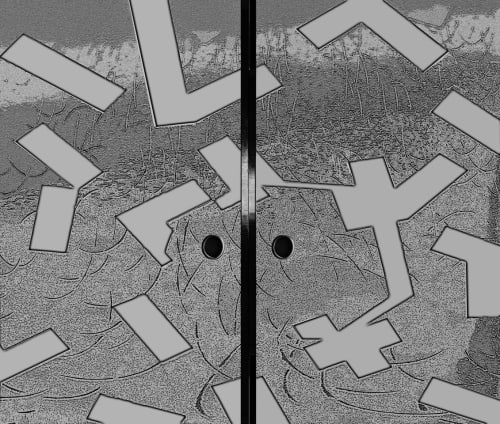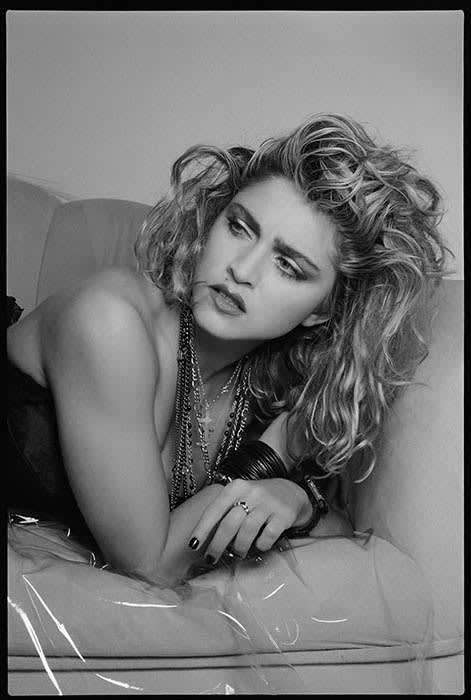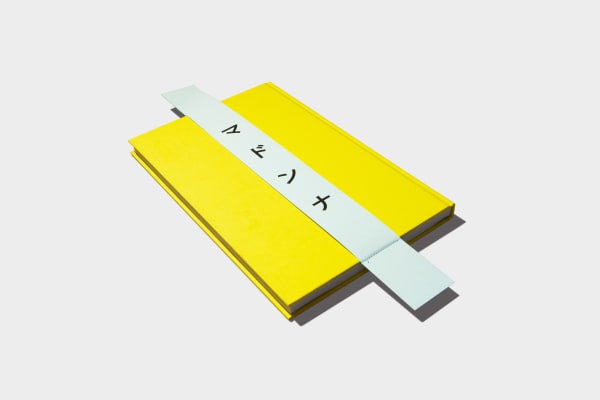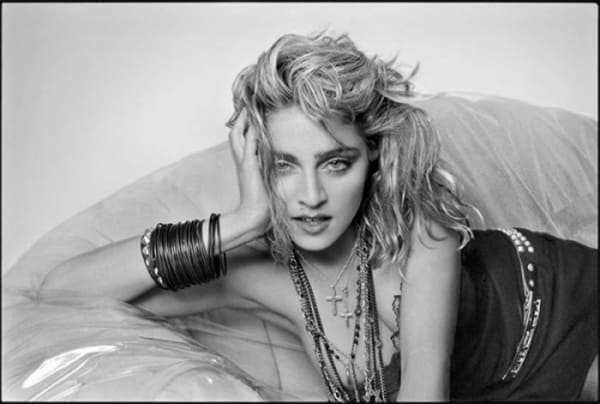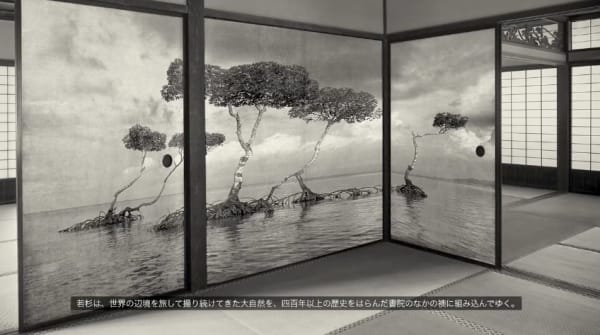“Adore”
There is a yellow Kodak box on the shelf in the darkroom.
Inside, it contains photographs of Madonna.
They have lain there for thirty-five years without seeing the light of day.
However, in February of this year, they were published in London as a photobook under “Adore.”
It felt like a miracle.
Madonna. January 1985. Tokyo.
Madonna made her first visit to Japan to promote the Like a Virgin album.
Playboy Weekly (Shueisha Inc.) gave me only forty-five minutes for shooting her pictures.
Fusuma Photography
The sliding paper doors in a traditional Japanese room are called fusuma. I photographed these then superimposed them with photographs of “flowers, birds or landscapes” that I had taken during my travels.
Two worlds fuse, a chemical change occurs, the pictures coming together with the architectural space to create panoramic works.
I call this form of artistic expression “Fusuma Photography.”
Wakasugi Kenji
Wakasugi’s works are forever evolving and it is difficult to tell whether they are photographs or illusions. They present scenes that do not exist in reality but evoke nostalgia or depict a universe we would all like to see. In his most outstanding work, he used photographs of nature that he had taken in remote regions of the world to decorate the sliding paper doors of a traditional, four-hundred-year-old Japanese building, thereby combining mutually exclusive elements—interior and exterior, light and dark, stillness and motion, film and digital, past and present.
In this, his second New York exhibition, he will show photographs of Madonna that he took for a magazine when she first visited Japan in 1985. Madonna’s well-toned body, her face, her coquettish vitality— thirty six years have passed since she released her hit song, “Material Girl,” the sound and rhythm of which embodies materialism. I wonder what the challenging gaze of this eighties icon has to say to us today.
In the same way that Wakasugi’s recent work in mixed media surpasses the barriers of time and space, it leads to fusion and explosion, before finally giving birth to a transformation. The subsequent reaction that occurs between these most beautiful things will doubtless reveal an unknown world.
-Shoko Aono
Special thanks to:
Douglas Dubler 3
Photographer
Madonna “Synthesis” exhibition printing ,
digital asset management, gallery lighting director,
image curation of Madonna show
Nick Groarke
Creative Director, NJG Studio Ltd
Publisher of “ ADORE “ Vol.1 and Vol. 2
Irfan Yonac
Retoucher
All images in Madonna show are printed on Canson Prestige Baryta paper
New York, NY Ippodo Gallery welcomes you Synthesis II, our second solo exhibition of works by Kenji Wakasugi, on view from December 3rd, 2021 to January 7th, 2022.
A sequel to Synthesis, Wakasugi’s inaugural exhibition at the gallery in 2016, Synthesis II highlights the artist’s exploration of photography inspired by traditional ink-painting. The show will also feature individual prints and a limited second edition publication of the photo book ADORE from his 1985 photoshoot with Madonna, published by Nick Groarke, NJG Studio Ltd. in London.
Kenji Wakasugi was born in Osaka in 1941 and graduated from Osaka’s Tokyo Technical School of Photography (now the Visual Arts Technical School) in 1969. In 1996, Wakasugi published his first photo book, My Shangri-La, winning accolades at the 76th annual Art Directors Club Awards in 1997. Wakasugi’s works have been exhibited worldwide, including the Japanese Embassy in Belgium, the Nikon Salon in Ginza, Tokyo, and at Ippodo Gallery, New York. His works can be found in the permanent collections of the Philadelphia Museum of Art and the Museum of Photographic Art, San Diego.
A key inspiration throughout Wakasugi’s work is Junichirō Tanizaki’s 1933 essay, “In Praise of Shadows.” A reverence for shadow and negative space permeates both Wakasugi’s traditional and modernist works.
A student of Japan’s long history of ink-wash painting, or suiboku-ga, Wakasugi uses black and grey in his traditional photography of flowers, plants, and landscapes, to evoke classical painting by luminaries such as Tōyō Sesshū (d. 1506) and Eitoku Kanō (1543–1590). Many of his works show classical paintings on sliding doors, or fusuma, in their architectural setting, incorporating the physical location of the painting and its manmade and natural surroundings into the fabric of the image.
Juxtaposed to works emphasizing traditional styles and architecture are Wakasugi’s images of Madonna, demonstrating a vivid sense of modernity and nostalgia for the late 20th century. Taken during a 45-minute photoshoot, Wakasugi captures the then 27-year old Madonna promoting her album Like A Virgin wearing clothes by Jean Paul Gaultier as well as numerous crucifixes and rosaries. Transcending typical fashion photography, Wakasugi’s portraiture focuses on Madonna’s facial expressions and gestures to reveal the superstar’s stunning sensuality.
Wakasugi uses an array of modern and traditional techniques to further alter his photography, such as digital manipulation and the application of gold leaf and his ink-wash painting or calligraphy. Emphasizing his range of styles and influences, Wakasugi mounts his paintings using Western-style framing and hanging scrolls or fusuma sliding doors.
Special thanks to:
Douglas Dubler 3
Photographer
Madonna “Synthesis” exhibition printing ,
digital asset management, gallery lighting director,
image curation of Madonna show
Nick Groarke
Creative Director, NJG Studio Ltd
Publisher of “ ADORE “ Vol.1 and Vol. 2
Irfan Yonac
Retoucher
All images in Synthesis II are printed on Canson® Infinity Baryta Prestige paper.
